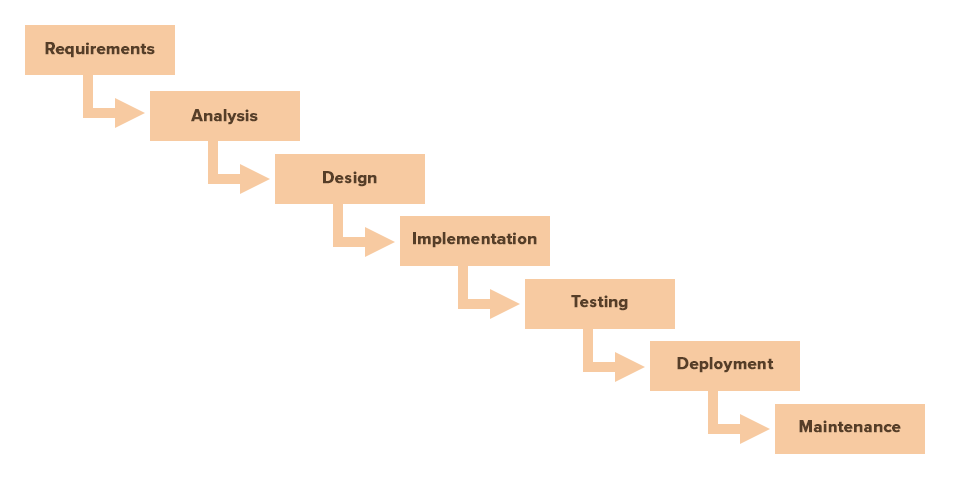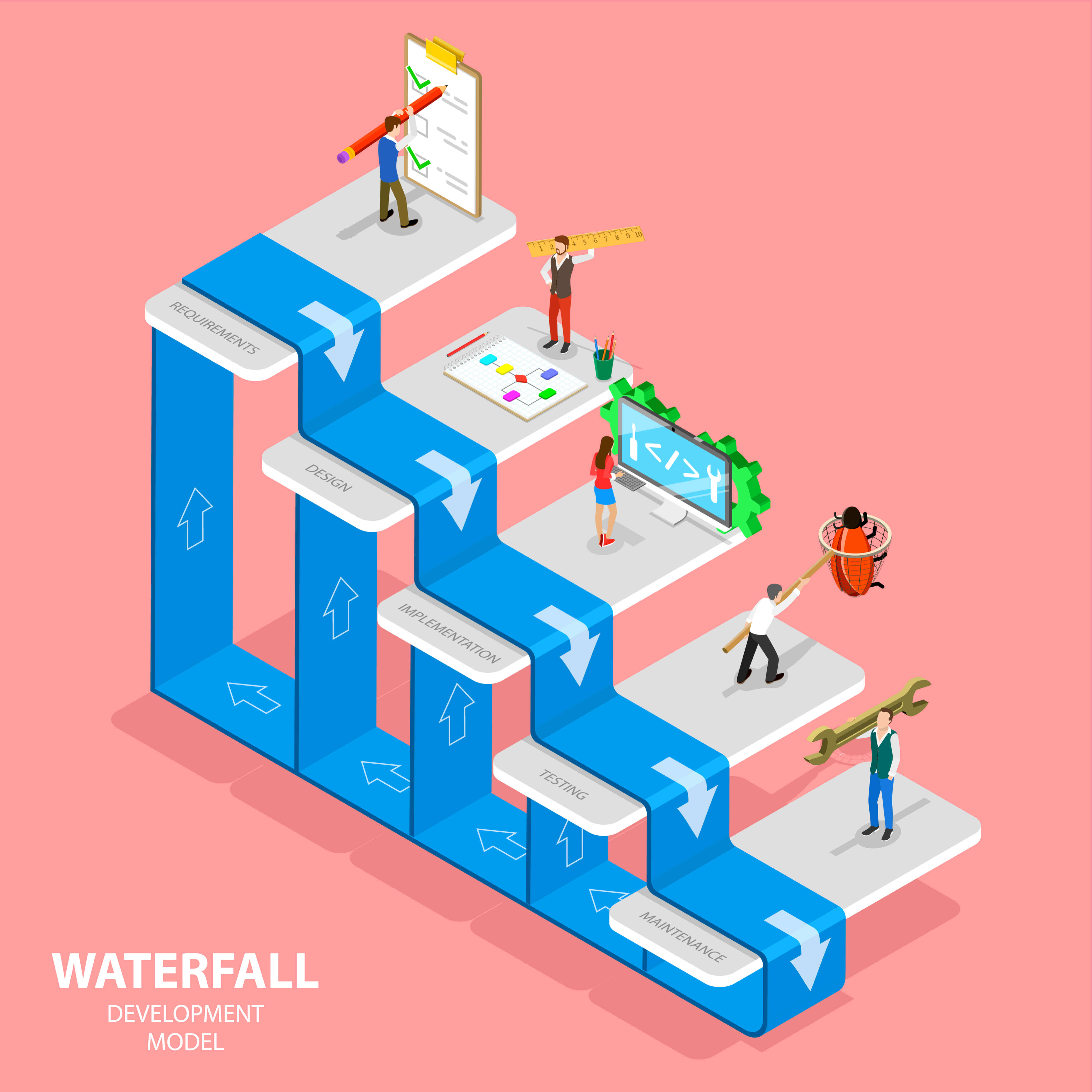

- HISTORY OF WATERFALL PROJECT MANAGEMENT UPDATE
- HISTORY OF WATERFALL PROJECT MANAGEMENT SOFTWARE
- HISTORY OF WATERFALL PROJECT MANAGEMENT CODE
It was during their 3-day stay that they envisioned a new software development model. What is Agile?īefore we give you a definition, let us provide you with a bit of history.īetween February 11-13, 2001, 17 developers with different backgrounds met at the Lodge of Snowbird ski resort in the Wasatch mountains of Snowbird, Utah to vacation and discuss a common model for software development. In between each phase, there is usually a review and sign off process to ensure all goals are met before moving on to the next stage.
HISTORY OF WATERFALL PROJECT MANAGEMENT UPDATE
Maintenance - post-release correct or adaptive measures to improve and update the final product, such as patch updates. Operation/Deployment - the final product or application is considered fully functional and is deployed to a live environment. HISTORY OF WATERFALL PROJECT MANAGEMENT CODE
Testing - the testing of the code using quality assurance engineers and a variety of software tests to root out bugs, errors, and other issues that need to be resolved.Coding/Implementation - the source code developed using the logic, requirements, specification, and processes from the earlier stages.
 Design - the design specification document that outlines technical design requirements such as data sources, hardware, and the programming language to be used. Analysis - an analysis of the exact system specifications used to generate product models and business logic, along with financial and technical resources. Requirements - the definitions, plans, and specific processes for the upcoming project, including requirements, deadlines, and guidelines. The Waterfall method includes 7 non-overlapping stages: And on those projects, the cost of changing a design late in its development was costly and time-consuming - same as it used to be for software development. To understand the mindset of Waterfall, you should know that it has its origins in engineering. The principal feature of Waterfall is how much work is done upfront and how little the project usually changes from its initial conception. The project then gradually moves on to the proceeding steps which we’ll cover in the next section. These are long documents that detail as much as possible about the software and its requirements. It usually starts with heavy documentation up top. That’s because Waterfall projects move from one phase to the next in a linear progression of development and testing, building on the success of each previous stage. Waterfall is sometimes called the Linear Sequential Life Cycle Model. Really, the only way of doing things for a long time. The Waterfall model or method was the pinnacle of software development. What is Waterfall?Īgile is the original software development model that all other methods come from. It’ll give you a broad overview of the major differences between them, along with their pros and cons.īut before we start comparing them, we should define them.
Design - the design specification document that outlines technical design requirements such as data sources, hardware, and the programming language to be used. Analysis - an analysis of the exact system specifications used to generate product models and business logic, along with financial and technical resources. Requirements - the definitions, plans, and specific processes for the upcoming project, including requirements, deadlines, and guidelines. The Waterfall method includes 7 non-overlapping stages: And on those projects, the cost of changing a design late in its development was costly and time-consuming - same as it used to be for software development. To understand the mindset of Waterfall, you should know that it has its origins in engineering. The principal feature of Waterfall is how much work is done upfront and how little the project usually changes from its initial conception. The project then gradually moves on to the proceeding steps which we’ll cover in the next section. These are long documents that detail as much as possible about the software and its requirements. It usually starts with heavy documentation up top. That’s because Waterfall projects move from one phase to the next in a linear progression of development and testing, building on the success of each previous stage. Waterfall is sometimes called the Linear Sequential Life Cycle Model. Really, the only way of doing things for a long time. The Waterfall model or method was the pinnacle of software development. What is Waterfall?Īgile is the original software development model that all other methods come from. It’ll give you a broad overview of the major differences between them, along with their pros and cons.īut before we start comparing them, we should define them. 
Today, we’re going to pit these two tried-and-true software development methods against each other. Then came Agile, and it rocked the software development world. Software development has followed the same evolution.įor most of its history, software development was dominated by the Waterfall methodology.įor a long time, there wasn’t a better alternative.

Agile vs Waterfall is a long-running fight and we hope to declare the winner today.įrom music to clothes to cars, the list is endless.








 0 kommentar(er)
0 kommentar(er)
